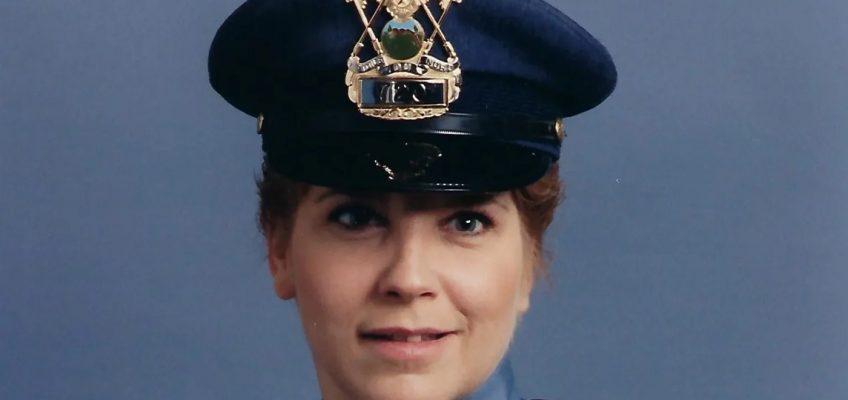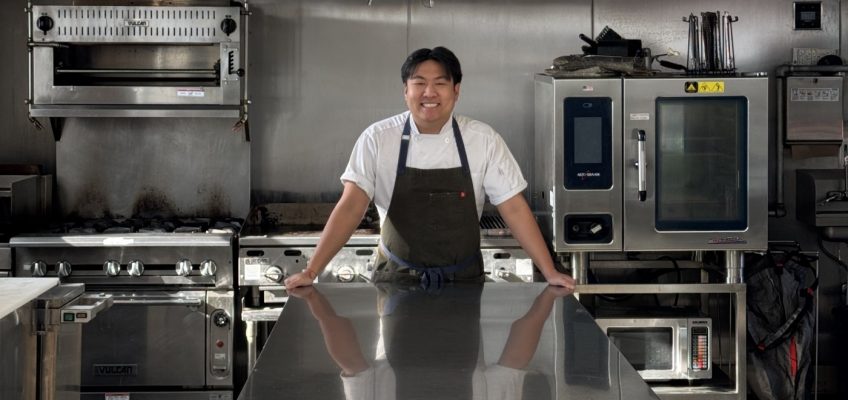Felicia Reilly’s final wish was for a full police funeral “with the honor of loyalty of her family in blue,” her family wrote to St. Paul’s police chief shortly before she died.
Reilly had to retire as a St. Paul police officer after she was brutally assaulted in 2010 when she responded to a 911 call. Reilly sustained a brain injury and suffered debilitating headaches and pain, and ultimately lost the ability to walk. She died at home on Saturday at age 67 with her husband, Matt Reilly, by her side.
Felicia Reilly in February 2010. (Courtesy of the Reilly family)
“Felicia has spent the last 15 years in terrible pain,” Matt Reilly said. “She told me with tears in her eyes this pain never stops.”
Hundreds of officers are expected to attend Reilly’s funeral in St. Paul on Monday. A line-of-duty death funeral “is appropriate given how she was assaulted and what led to her tragic death,” St. Paul Police Chief Axel Henry wrote in an email to department employees Tuesday.
The family says the public is also invited to Reilly’s funeral.
“Mom was all about the people,” said one of her daughters, Theresa Paulson.
Mayor Melvin Carter said Reilly’s “service and sacrifice will never be forgotten.”
“After suffering life-changing injuries in the line of duty 15 years ago, her resilience and dedication continue to inspire us all,” he said in a statement.
She’d been in ‘peak physical condition’
Reilly entered the St. Paul Police Department academy in 1996 as a 39-year-old married mother of five. She had wanted to be an officer, but went to school for nursing before later pursuing a degree in law enforcement.
She’d been “in peak physical condition,” said Matthew Reilly II, Felicia’s oldest son. “Standing 5’4” and at one point described as a muscular cherub by the Pioneer Press, Mom took her physical fitness seriously. While she preferred to de-escalate and talk through issues, for a police officer this is not always an option, and because some of the suspects she encountered would underestimate her, she knew she had to be prepared to hold her own.”
Felicia Reilly is shown in a January 1997 photo surrounded by her children, from left, Ben, 14, Matt, 17, Zachary, 7, Marianne, 13, and Theresa, 14. Reilly was among 40 new officers who graduated from the St. Paul Police Academy on Jan. 9, 1997. (Scott Takushi / Pioneer Press)
She was a hard-working officer “who never believed in being bored,” said Paulson, who was previously a 911 dispatcher and used to dispatch for her mother and other officers. During middle-of-the-night shifts, when Reilly wasn’t responding to calls, Paulson would ask, “What are you up to, Mom?”
“She said, ‘I’m baby-sitting a stop sign to make sure it doesn’t move,’” joked Paulson, referring to Reilly enforcing traffic rules.
During Reilly’s dinner breaks, she’d eat leftovers from home in her squad car, calling it her “mobile office.”
“They were putting four young adult children through college and still had a teenager at home,” so they needed to be frugal, Paulson said.
She was protecting elderly couple
In March 2010, Reilly responded to a 911 hang-up call at Thomas Jerard Swenson’s parents’ home. His parents told Reilly he was trying to hurt them and they were afraid, Paulson wrote in the letter to Henry requesting a police funeral on behalf of her mother and her family.
Swenson came out of the home and she went to detain him, but “he swung at her” with “such force to knock her to the ground” and then kicked her in the back of the head several times, wrote Paulson, who is now an attorney.
Reilly “went through her entire tool belt,” Paulson said, describing how her mother used her expandable baton to strike Swenson, Tased him to no effect and pulled her handgun. He ran and “she made the split-second decision not to shoot him in the back because my mom is honest and has integrity, and that’s what she wanted to be known for — always making the right choice.”
She “fought harder and longer than most would,” son Matthew Reilly said.
Hudson police find deceased woman during welfare check; man taken into custody
St. Paul man charged in 3 sex assaults arrested, police still looking for potential victims
Woodbury man sentenced for string of Washington County bank robberies
St. Paul: Pedestrian fatally struck by Green Line train
Former Oakdale man treated ‘like a dog’ before murder in upstate New York, prosecutor says
If Reilly had waited for backup to arrive, “she would not have been protecting the elderly couple and would have been accused of cowardice — a label that would never be used to describe my mother,” Paulson wrote.
A jury found Swenson guilty of first-degree assault and he was sentenced to 8½ years in prison. While the prosecution was making the point in court about how severely injured the assault left Reilly, the city was questioning whether she qualified for workers’ compensation, said Matt Reilly in 2016. He retired from his job as a St. Louis Park police investigator to take care of his wife.
She settled her workers’ comp claim with the city when they were on the brink of bankruptcy over her medical bills, Matt Reilly said previously.
She worried she’d been forgotten
Former St. Paul police officer Felicia Reilly laughs as she is given a gift by Assistant Chief Kathy Wuorinen during a ceremony recognizing and honoring Reilly for her years of service at the St. Paul Police Federation office in St. Paul on Wednesday, Nov. 2, 2016. (Scott Takushi / Pioneer Press)
Reilly’s brain injury caused “a progressive degradation of her health and motor function,” son Matthew Reilly said.
Her daily headaches averaged a level seven on a pain scale of 10. None of the treatments she received fully made her headaches go away.
She was a clarinet player, but could no longer play because the sound hurt her head and her brain injury caused double vision in both eyes. She mostly stayed home, other than going to church and the grocery store.
On her worst days, she “used to say she wished she hadn’t survived the assault because if you die on duty, you are treated like a hero, but if you are simply hurt too bad to continue working, you are treated like an embarrassment, best left forgotten or used as a cautionary tale,” said son Matthew Reilly.
Reilly was worried she’d been forgotten, but the outpouring of support from the city and the community since her death has made it clear that wasn’t the case, her son said. They planned to have her funeral at a smaller venue and have since moved it to a larger space.
No new charges
Chief Henry wrote in the department email this week: “Unfortunately, we can’t go back and prevent this tragedy. We have also learned that there is no way for us to amend and upgrade the charges the person responsible for the attack on Felicia was already convicted of.
“What we can do is honor her and the sacrifice she made, in the line of duty, for our city and all of us,” he continued. “Many of you didn’t even work here in 2010 when this vicious assault took place, but we are all here now which gives us the opportunity to show our respect and appreciation for her and her family’s struggle.”
Because Swenson was convicted of first-degree assault and the double jeopardy clause in the U.S. Constitution says no person can be tried twice for the same crime, the Ramsey County Attorney’s Office said it cannot pursue additional charges against him.
Reilly’s family can apply to the Minnesota Department of Public Safety to request that her death is formally recognized as occurring in the line of duty, which DPS then reviews to determine if it meets guidelines the Legislature has defined in state law, according to a DPS spokesman.
‘Fought to live’
Before Reilly was assaulted, she loved sewing and making clothes for her kids and grandkids. She used to go camping and fishing.
Felicia and Matt Reilly were married for 47 years. “There was never a better mom, friend or wife in the world,” he said.
When she could still communicate, she told her husband “that one of her saddest facts was that only one grandchild knew her before she got hurt,” Matt Reilly said.
Her traumatic brain injury progressed and “took a terrible turn for the worst” in September 2023, which led to numerous hospitalizations, according to her husband.
St. Paul man charged in 3 sex assaults arrested, police still looking for potential victims
St. Paul City Council to hear appeal of FCC Environmental trash truck site on March 19
St. Paul: Pedestrian fatally struck by Green Line train
St. Paul: National Park Service’s visitor center at Science Museum of Minnesota among sites that could be closed
Former Oakdale man treated ‘like a dog’ before murder in upstate New York, prosecutor says
“She fought to live because she wanted to live,” Paulson said.
But with the “tremendous unrelenting pain” she was experiencing, they “knew it was time” and she started home hospice care, Matt Reilly said.
“Most of all she loved and loves Jesus,” Matt Reilly wrote shortly before she died. When he’d see her wincing or in distress, he’d put on worship music and she’d “lay still with a peaceful look on her face.”
Funeral for Felicia Reilly
Visitation will begin 9 a.m. Monday at Gustavus Adolphus Lutheran Church, 1669 Arcade St. in St. Paul, with the funeral service at 11 a.m.
Interment will be at Roselawn Cemetery in Roseville.




